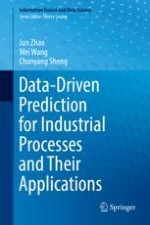2018 | OriginalPaper | Chapter
3. Industrial Time Series Prediction
Authors : Jun Zhao, Wei Wang, Chunyang Sheng
Published in: Data-Driven Prediction for Industrial Processes and Their Applications
Publisher: Springer International Publishing
Activate our intelligent search to find suitable subject content or patents.
Select sections of text to find matching patents with Artificial Intelligence. powered by
Select sections of text to find additional relevant content using AI-assisted search. powered by
